45+ Sample Job Analysis Templates
-
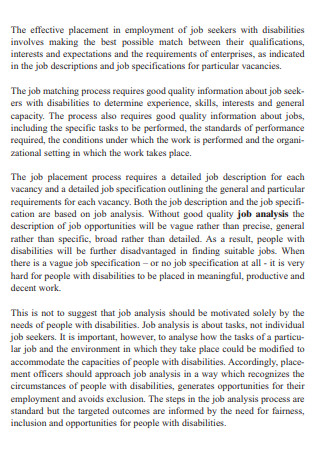
Job and Work Analysis
download now -
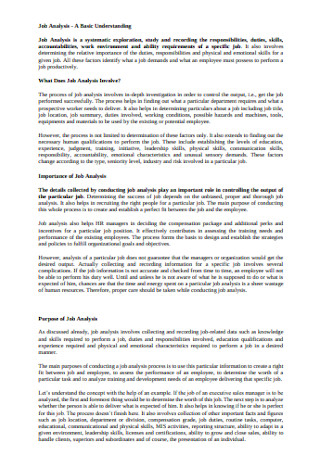
Job Analysis Importance
download now -
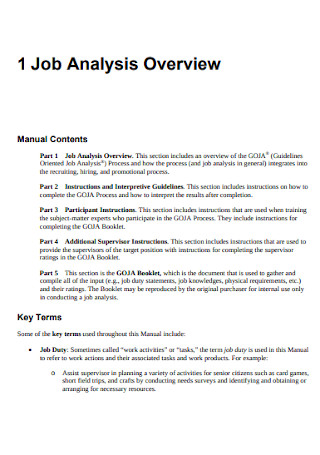
Job Analysis Overview
download now -
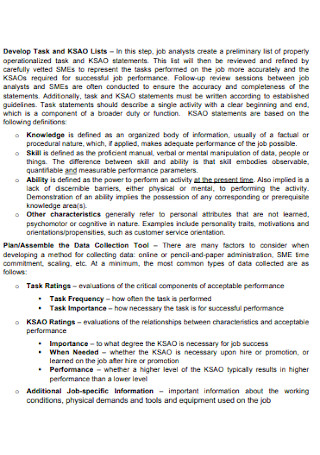
Effective Job Analysis
download now -
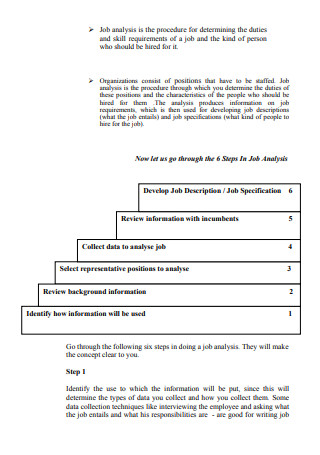
Job Analysis Steps
download now -
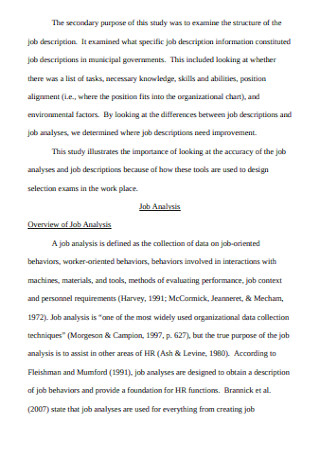
Basic Job Analysis
download now -

Job Analysis Outcomes
download now -
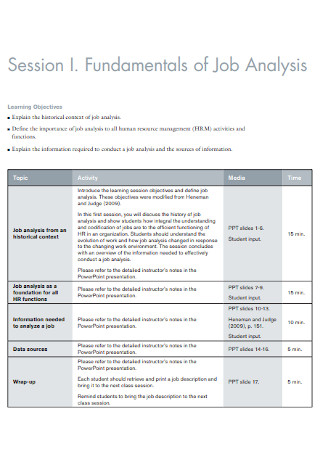
Fundamentals of Job Analysis
download now -
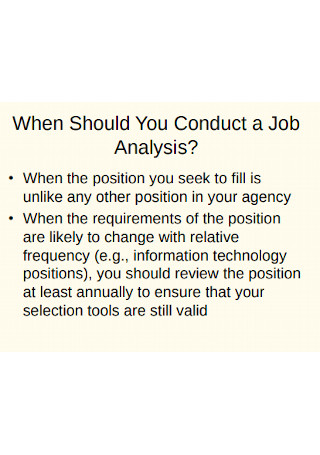
Simple Job Analysis
download now -
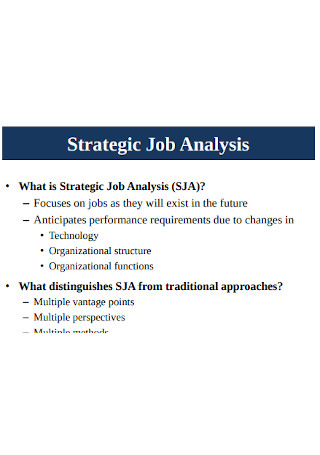
Strategic Job Analysis
download now -
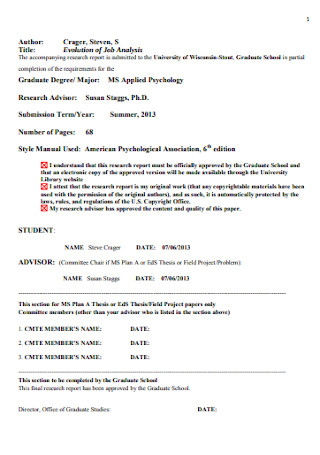
Job Analysis Evolution
download now -
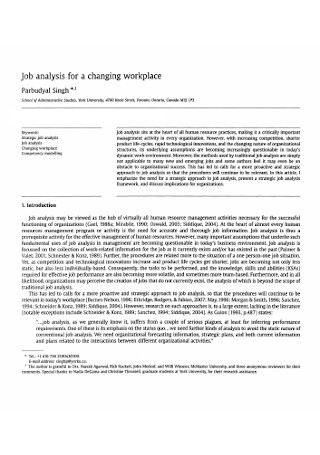
Job Analysis of Changing Workplace
download now -
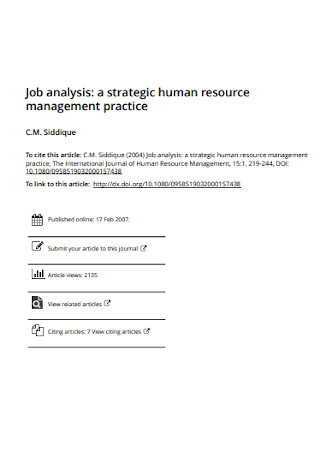
Human Resource Job Analysis
download now -
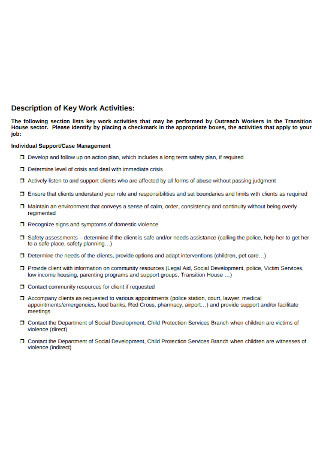
Job Analysis Questionnaire
download now -
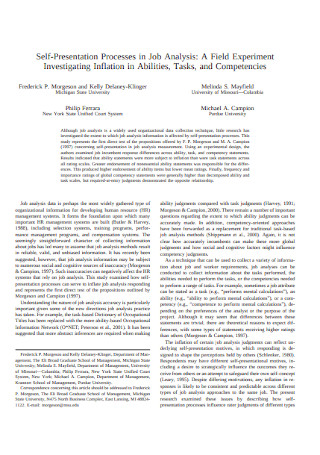
Self-Presentation Processes in Job Analysis
download now -
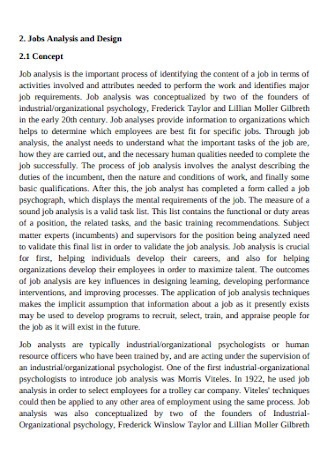
Job Analysis and Design
download now -
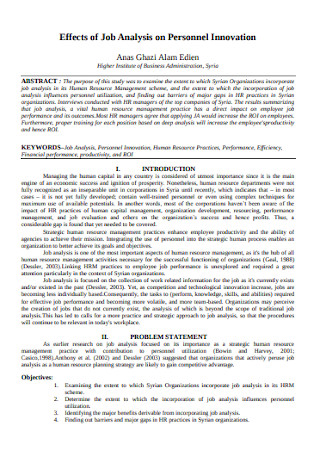
Job Analysis Effects
download now -

Sample Job Analysis Questionnaire
download now -
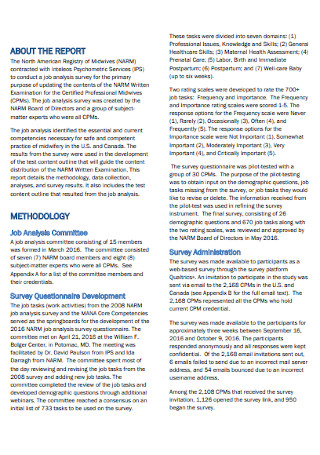
Job Analysis Survey Report
download now -
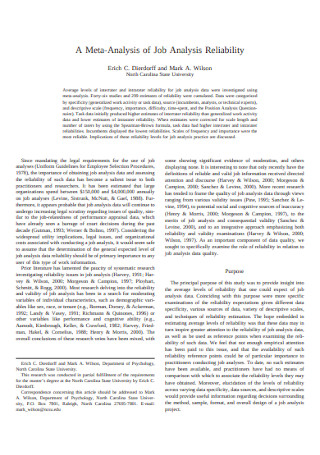
Meta Analysis of Job Analysis
download now -
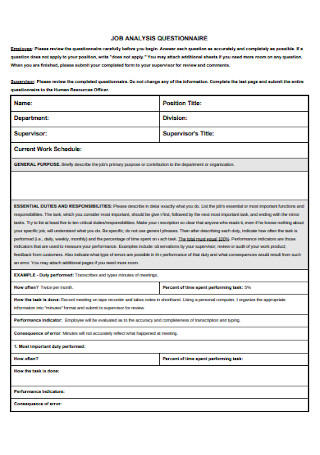
Employee Job Analysis Questionnaire
download now -
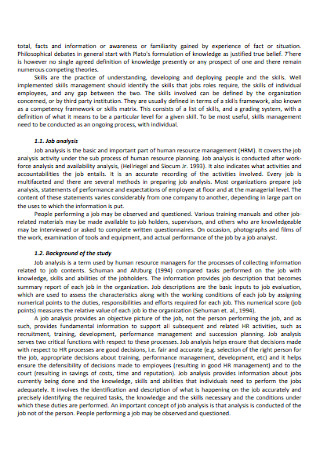
Competency based Job Analysis
download now -
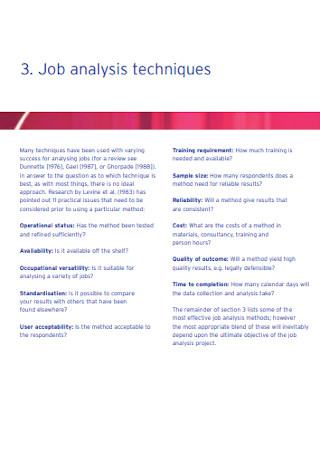
Job Analysis Techniques
download now -
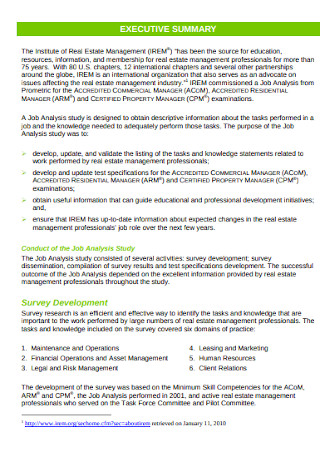
Job Analysis Executive Summary
download now -
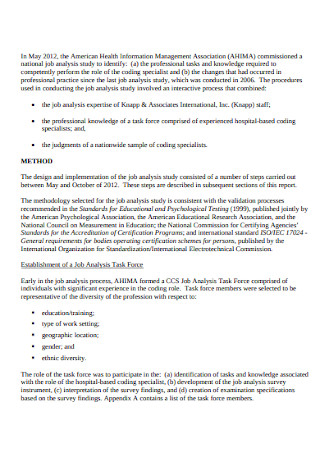
Job Analysis Summary Report
download now -
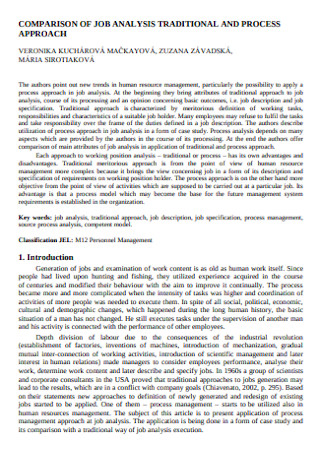
Job Analysis Comparision
download now -
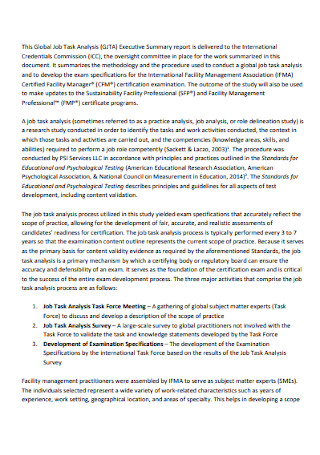
Sample Job Task Analysis
download now -
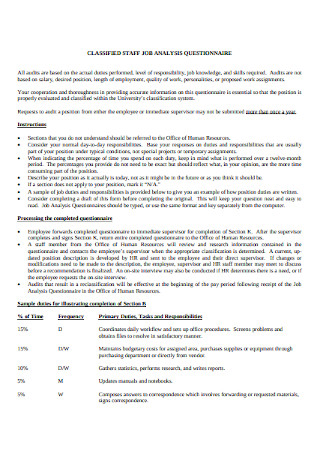
Classified Staff Job Analysis Questionnaire
download now -
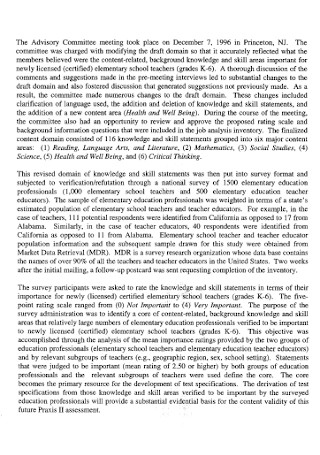
Job Analysis Research Report
download now -
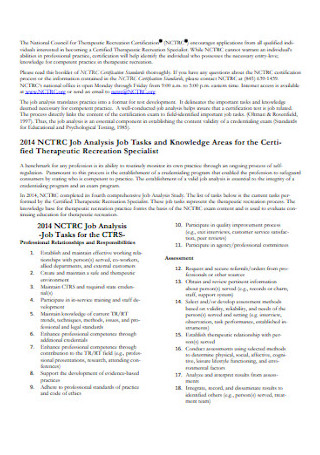
National Job Analysis
download now -
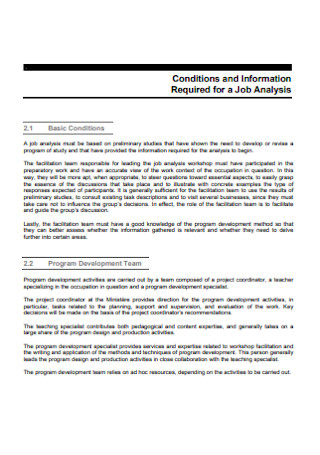
Job Analysis Workshops
download now -
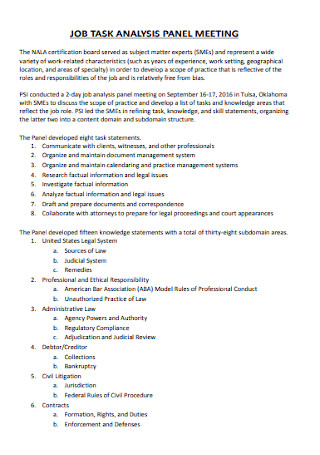
Job Task Analysis Panel Meeting
download now -
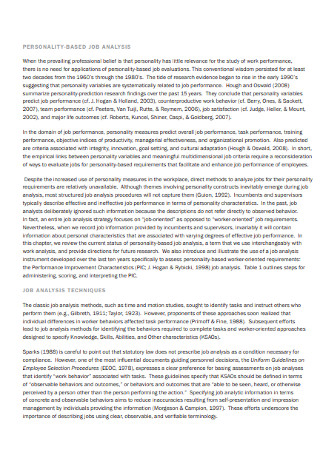
Personality Based Job Analysis
download now -

Job Analysis of Work Demands
download now -
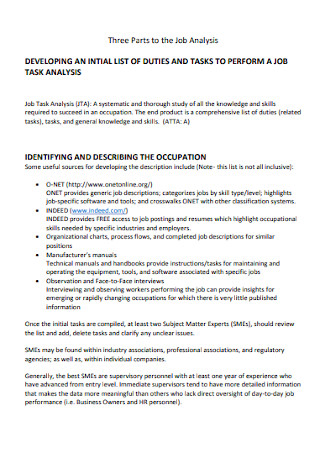
Job Analysis Parts
download now -
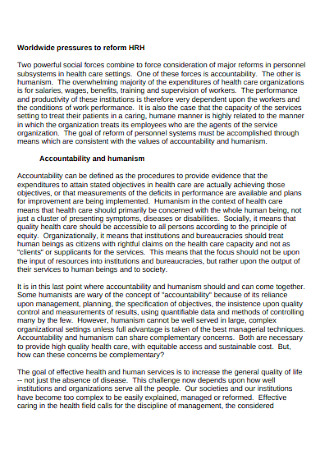
Functional Job Analysis
download now -

Web Based Job Analysis
download now -
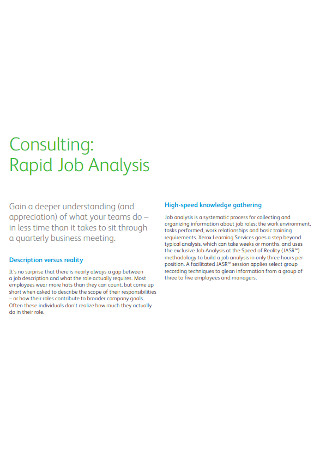
Standard Job Analysis
download now -
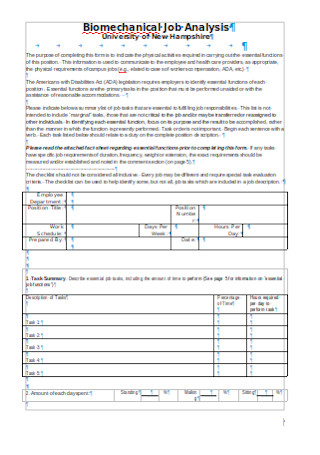
Bio mechanical Job Analysis
download now -
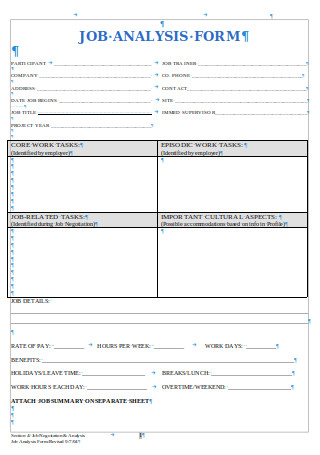
Sample Job Analysis Form
download now -
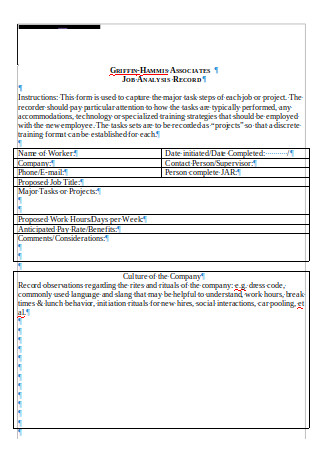
Job Analysis Record
download now -
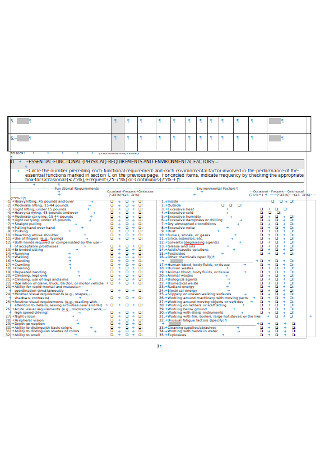
Job Analysis Worksheet
download now -

Job Safety Analysis
download now -

Job Analysis Form Example
download now -

Job Analysis Types
download now -

Professional Job Analysis Form
download now -

On-Site Job Analysis Template
download now
What Is A Job Analysis?
A job analysis is an organized or systematic process of collecting important data that can be studied and referred to by an organization whenever there is a need to put together, evaluate, and identify the appropriate responsibilities that will be associated with a specific work position. Aside from this, the procedures within a job task analysis also looks into the relation of a job designation to specific accountability and to the work environment where work processes will be done. By executing a job analysis, a business can make sure that the nature of the job post and its requirements are aligned with the qualities and characteristics of the employee who will be given the work designation.
Application of Job Analysis to Business Activities
Once you are already holding the job analysis report, do you know how you can use the data that you have at hand? You have to be strategic when applying job analysis and its results to different areas of your operations and practices. Here are some of the activities or programs where you can optimize the results that you will get from a job analysis:
1. Proper Employee Selection
Selecting a qualified employee for a particular work position can be a tedious job especially if you are given a hundred of application forms and other application documents. If you want your recruitment selection to be fast and efficient, the results of your job analysis can help you identify the entity who is most suitable for the open work post.
Since you are already aware of the employee qualities and characteristics that are aligned with the requirements and demands of the job, you can easily select your potential workforce member from a number of applicants with ease. With all of these, make sure to execute a job analysis first before crafting an employment offer and/or an employment contract to ensure that all the items that you will put in the specified documents are aligned with what you are expecting and looking for.
2. Strategic Organizational Planning
Your organizational planning can become more effective if you already have a specific description of how different work posts can contribute to the achievement of your desired corporate successes. Your job analysis can help the human resource department define the particular needs of your business in relation to its required manpower and labor services.
The coordination of all the deliverable that you would like to get from your employees can enable you to link all the activities of the organization that can lead towards realizing a common goal. More so, the availability of a transparent and objective job analysis can give you the chance to facilitate and look into the best manners on how work responsibilities and obligations can be designated within the members of the organization. Through this, duties that are based on the design and structure of the company can be given to people who are able to deliver what is needed from them in a timely manner.
3. Effective Workforce Training
In consideration to the growth and improvement of your employees, there are certain human resource planning activities that must be prioritized. With a job analysis at hand, the management can support the efforts of the hr personnel towards employee management and development. The specific document can showcase how evident it is for employees to learn and be immersed in new things based on the assessment of their performance in alignment to the requirements of their work post.
In addition to what has already been stated above, a job analysis can present the quality standards that the employees should meet so that their level of productivity and overall performance can match the needs of the operations and the business. With this, the results of job analysis is very important to the human resource department as it helps them identify the proper training programs and courses that should be implemented to ensure the quality of the workforce’s actual performance.
4. Accurate Job Description, Specification, Evaluation, and Compensation
What you will get from a job analysis can help your organization achieve work simplification. This means that you can study each job posts in minute details which can enable you to describe what the work entails. Proper job description and specification can give you the ability to point out all the key factors that can let you choose employees who can do their part in terms of materializing job requirements. More so, the results of your job analysis can let you evaluate the job further resulting to the development of the right compensation program that a qualified candidate will be entitled with if he or she is selected for the job.
8 Steps for Having an Impressive Job Analysis
Are you now interested to conduct a job analysis but is unaware of how you can come up with the document that you need for the activity? We got you covered with this matter so you should not be worrying anymore. Below are the steps that you can use and follow if you want to confidently create an impressive job analysis on your own.
Step 1: Find an Excellent Job Analysis Template That Can Serve as Your Content and Layout Formatting Guide
Whether it is the initial time that you have been immersed in the development of a job analysis or you are already used to making the specific document, using an effective template will always continue to be an advantage. Look for a job analysis template that can help you structure the format and content discussion for your job analysis document in the best way possible.
Step 2: Know the Main Purpose of Doing the Job Analysis
Before you proceed with the creation of the job analysis, you first need to list the purpose of the document. What is the document for? What are the areas of your operations that can be affected with the results of the job analysis? You have to know how to use the job analysis and its results accordingly so you can truly feel the positive changes that it can bring to your business and its stakeholders.
Step 3: List Down the Job/s That Will be Analyzed
You have to be specific with the job positions or designations that you would like to analyze. It is important for your job analysis to present all the job titles that will be included in the processes of analysis and/or evaluation. Focus on one job position at a time so you can give your undivided attention whenever you are looking into all the details of a job post’s requirements, specifications, nature, and core.
Step 4: Be Particular With Your Data Gathering Method, Plans of Actions, and Strategies
As we have specified above, you always have to be organized when making a job analysis. Know the method and tools that you will use for data collection. This can help you execute your interviews, surveying activities, and other programs effectively and completely. List down all of your call-to-actions and strategies so you can make sure that you can incorporate them in the specific areas of the job analysis processes.
Step 5: Identify the Level of Involvement of Your Workforce
Explain the process and the purpose of the job analysis to your employees. You have to make sure that you will involve them as they play an important role when it comes to giving the particulars of the work post and its requirements. They can also share their experiences and the things that they have observes as they try to execute their work functions during the operational hours of the organization. Come up with a clear scope and limitations of their involvement so you can set their expectations in terms of how they can help you with the analysis.
Step 6: Know the Reason Why the Job Is Essential in the Business’ Operations
Have an initial discussion of the impact that the job, when done right, can give to the business. Make sure that you will look into your organizational structure so you can also consider the alignment of the work position to all the other members of your business. This is very important when plotting the flow of your employees’ work processes in consideration of the organization’s manpower and operational requirements.
Step 7: Process All The Information From the Conduct of The Job Analysis
You have to collect all the job analysis information that you need to complete the process that you and involved stakeholders will get involved in. It is essential for you to track the dates when you have observed the actual performances of your employees. You also have to know the requirements for all the data gathering procedures that you will implement. Look into quality standards and measures as this can help you to have a more straight forward analysis of particular work positions. Actually, this part of the activity is mainly focused on analyzing the job in a very specific manner. In all of these, make sure to verify all the job analysis information that you will use.
Step 8: Look Into the Results of the Job Analysis
Have a transparent presentation of the job analysis results. Review the document properly so you can use it when developing operational call-to-actions especially those that involve the human resources. Finalize the document and update the job analysis frequently so you can be guided accordingly whenever you plan to use the material for purposes of referencing.
Advantages of Crafting a Comprehensive Job Analysis
What do you think is the importance of a job analysis? In reality, 39% of workers are willing to perform better and become more productive at work if they are actually happy (source: one4allrewards). Ensuring that your employees fit their job is one of the things that you can do so you can promote work satisfaction and happiness in the workplace. This is where the benefits of having a job analysis enter. A few of the many identified advantages of crafting a comprehensive job analysis are as follows:
Dos and Don’ts for Developing an Effective Job Analysis
The job analysis of your business must excellent so you can use it for many purposes. Never sacrifice the quality of your job analysis just because you are pressured to provide results. There are certain guidelines that you can incorporate in the processes of job analysis development so you can have an outstanding job analysis output. Here are some of the things that you should and should not do when making an effective job analysis:
Do’s
1. Do Make Your Job Analysis Presentable and Understandable
Ensure that your job analysis form and all the other documents that you will use in the processes of job analysis are appropriate to be utilized for business processes and discussions. Use a language that your employees and other target audience can understand. It is essential for your job analysis to be as clear as possible so that none of your stakeholders will be confused or misled with your presentation.
2. Do Base Your Job Analysis on Facts
Use employee questionnaires, surveys, and interview sheets to ensure that your data gathering processes are well-recorded. These tools can also help you prove that the result of your job analysis is truly an output of several data gathering activities. We highly-recommend you to use a number of job analysis tools rather than relying on one so you can strengthen your data presentation and validation. It will be best if you can supplement the results that you have gathered with the usage of one tool with the results coming from another.
3. Do Ensure That The Data Which You Will Collect and Study Can Clearly Define the Performance Requirements For a Specific Job
It is of utmost importance for you to make sure that the job analysis is a collaboration between the human resource department, the third party specialists and experts that you hired, and the employees of the organization. This is to ensure that the results that you will get is not one dimensional. With the help of all involved stakeholders; you can make sure that the work description and specification of a particular work position are clarified based on the data provided a number of credible sources of information.
Don’ts
1. Don’t Implement Job Analysis Activities Without a Purpose
The reason why you need to create a job analysis can help you ensure that all relevant information are examined with objectivity. Know the purpose of the job analysis so you can be well-guided as you try to develop the specific document.
2. Don’t Lose Your Focus When Preparing, Implementing, and Assessing Your Job Analysis Strategies
Have a positive mindset and an organized thought process whenever you plan to immerse in the different stages of job analysis. You have to prioritize the things that you need to look into so that your job analysis strategies can be executed accordingly. Keep in mind that your job analysis strategies must be placed in particular time frames so you can align it with the objectives of your organization.
3. Don’t Use the Actual Content Found in Pre-Formatted Job Analysis Templates
Templates are mainly used for purposes of formatting. If you think that the actual content of your chosen pre-formatted template is good enough, you may want to reconsider. Different companies have different work specifications and descriptions for certain work functions even if the title for a certain job designation is the same. With this, make sure that you will only use a job analysis template as a layout guide and that you will still perform your own job analysis so you can put relevant, informative, and original content in the document’s layout.
If you want to have a high-quality document output, we suggest you to download and use any of the printable templates and samples that we have listed in this post. Get and make the most out of the discussion and references above so you can assure your stakeholders or any other target audience that you can provide them with a high-quality job analysis.
